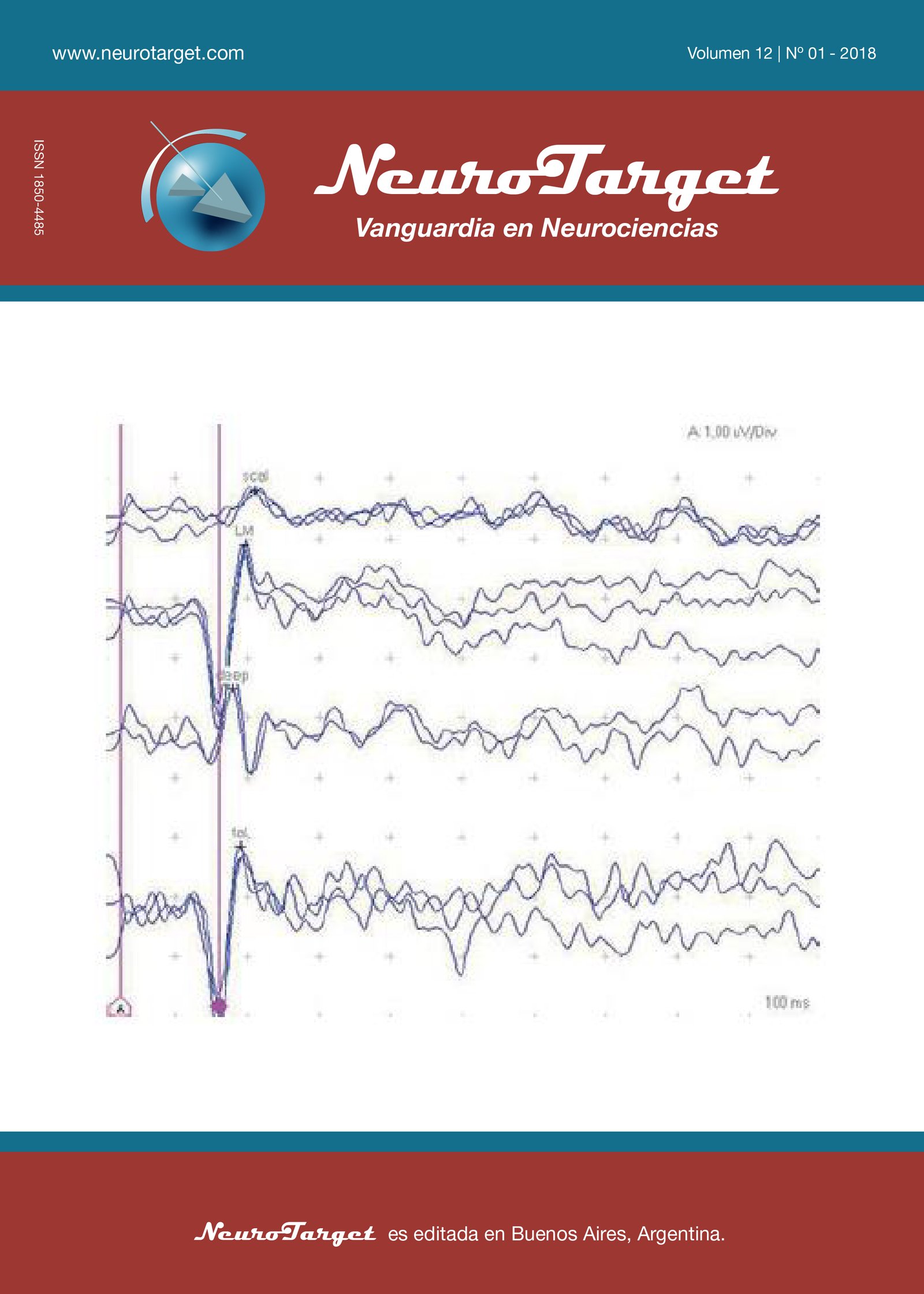Dolor y cuidados paliativos: el conocimiento de los estudiantes de medicina y las brechas de graduación.
Publicado originalmente en: Rev Dor. São Paulo, 2017 oct-dec; 18 (4): 307-10. Traducción: Noelia Sosa Echeverría.
DOI:
https://doi.org/10.47924/neurotarget2018139Palabras clave:
Instituciones académicas, analgesia, estudiantes de medicina, cuidados paliativos, estudiantesResumen
Actualmente la carrera de medicina no brinda la educación completa en manejo del dolor y también está desprovista de disciplinas que abordan la tanatología en la atención paliativa. El objetivo de este estudio fue evaluar el conocimiento sobre el dolor y los cuidados paliativos de los estudiantes de medicina y su percepción sobre cómo estos temas se enseñan durante la carrera de graduación.
Métricas
Citas
Ministério da Saúde (Brasil). Portaria no 19/GM de 03 de janeiro de 2002. [Portaria na internet, acesso em 6 abril de 2017] dis- ponível em: http://bvsms.saude.gov.br/bvs/ saudelegis/gm/2002/ prt0019_03_01_2002.html.
Rufino GP, Gurgel MG, Pontes T, Freire E. Avaliação de fatores determinantes do tempo de internação em clínica médica. Rev Soc Bras Clin Med. 2012;10(4):291-7.
Ferreira N, Miranda C, Leite A, Revés L, Serra I, Fernandes AP, et al. Dor e analgesia em doente crítico. Rev Clin Hosp Prof Dr Fernando Fonseca. 2014;2(2):17-20.
Araujo LC, Romero B. Dor: avaliação do 5o sinal vital. Uma reflexão teórica. Rev Dor. 2015;16(4):291-6.
Jamison RN, Sheehan KA, Scanlan E, Matthews M, Ross EL. Beliefs and attitudes about opioid prescribing and chronic pain management: survey of primary care provi- ders. J Opioid Manag. 2014;10(6):375-82.
Tournebize J, Gibaja V, MuszczakA, Kahn JP.Are physicians safely prescribing opio- ids for chronic noncancer pain? A systematic review of current evidence. Pain Pract. 2016;16(3):370-83.
Pearson AC, Eldrige JS, Moeschler SM, Hooten WM. Opioids for chronic pain: a knowledge assessment of nonpain specialty providers. J Pain Res. 2016;9:129-35.
Hermes HR, Lamarca IC. Cuidados paliativos: uma abordagem a partir das categorias profissionais de saúde. Ciên Saúde Coletiva. 2013;18(9):2577-88.
Tauben DJ, Loeser JD. Pain education at the University of Wash- ington School of Medicine. J Pain. 2013;14(5):431-7.
Loeser JD, Schatman ME. Chronic pain management in medical education: a disas- trous omission. Postgrad Med. 2017;129(3):332-5.
Webster F, Bremner S, Oosenbrug E, Durant S, McCartney CJ, Katz J. From opio- phobia to overprescribing: a critical scoping review of medical education training for chronic pain. Pain Med. 2017;23. [Epub ahead of print].
Green CR, Wheeler JR, Marchant B, LaPorte F, Guerrero E. Analysis of the physician variable in pain management. Pain Med. 2001;2(4):317-27.
Hoang HT, Sabia M, Torjman M, Goldberg ME. The importance of medical educa- tion in the changing field of pain medicine. Pain Manag. 2014;4(6):437-43.
Bair MJ. Learning from our learners: implications for pain management education in medical schools. Pain Med. 2011;12(8):1139-41.
Eyigor S. Fifth-year medical students’ knowledge of palliative care and their views on the subject. J Palliat Med. 2013;16(8):941-6.
Weber M, Schmiedel S, Nauck F, Alt-Epping B. Knowledge and attitude of medical students in Germany towards palliative care: does the final year of medical school make a difference? Schmerz. 2016;30(3):279-85.
Zalaf LR, Bianchim MS, Alveno DA. Assessment of knowledge in palliative care of physical therapists students at a university hospital in Brazil. Braz J Phys Ther. 2017;21(2):114-9.
Léon MX, Corredor M, Ríos F, Sanabria A, Montenegro M, Gónima E, et al. ¿Qué perciben los estudiantes de medicina sobre sus conocimientos en dolor? Análisis de la situación en Colombia. Med Paliat. 2007;14(1):33-9.
Pinheiro TR. Avaliação do grau de conhecimento sobre cuidados paliativos e dor dos estudantes de medicina do quinto e sexto anos. O Mundo da Saúde. 2010;34(3):320-6.
Mäntyselkä P, Kumpusalo E, Ahonen R, Kumpusalo A, Kauhanen J, Vinamäki H, et al. Pain as a reason to visit the doctor: a study in Finnish primary health care. Pain. 2001;89(2-3):175-80.
Upshur CC, Luckmann RS, Savageau JA. Primary care provider concerns about management of chronic pain in community clinic populations. J Gen Intern Med. 2006;21(6):652-5.
Donovan M, Dillon P, Mcguire L. Incidence and characteris- tics of pain in a sample of medical-surgical in patients. Pain. 1987;30(1):69-78.
Trentin L, Visentin M, De Marco R, Zandolin E. Prevalence of pain in public hospital: correlation between patients and caregivers. J Headache Pain. 2001;2(2):73-8.
Abbott FV, Gray-Donald K, Sewitch MJ, Johnston CC, Edgar L, Jeans ME. The prevalence of pain in hospitalized patients and resolution over six months. Pain. 1992;50(1):15-28.
Lebovits AH, Florence I, Bathina R, Hunko V, Fox MT, Bramble CY. Pain knowledge and attitudes of healthcare providers: practice characteristic differences. Clin J Pain. 1997;13(3):237-43.
Pöyhiä R, Niemi-Murola L, Kalso E. The outcome of pain re- lated undergraduate teaching in Finnish medical faculties. Pain. 2005;115(3):234-7.
DiBiasio E. Palliative and end-of-life care education among Alpert medical school students. R I Med J. 2013;99(4):20-5.
Leila NM, Pirkko H, Eeva P, Eija K, Reino P. Training medical students to manage a chronic pain patient: both knowledge and communication skills are needed. Eur J Pain. 2006;10(2):167- 70.
Descargas
Publicado
Cómo citar
Número
Sección
Licencia
Derechos de autor 2018 Débora Dalpai, Florentino Fernandes Mendes, João Antônio Vila Nova Asmar, Pauline Lopes Carvalho, Fernanda Laís Loro, Aline Branco

Esta obra está bajo una licencia internacional Creative Commons Atribución 4.0.
Este artículo se distribuye bajo la licencia Creative Commons Attribution 4.0 License. A menos que se indique lo contrario, el material publicado asociado se distribuye bajo la misma licencia.







